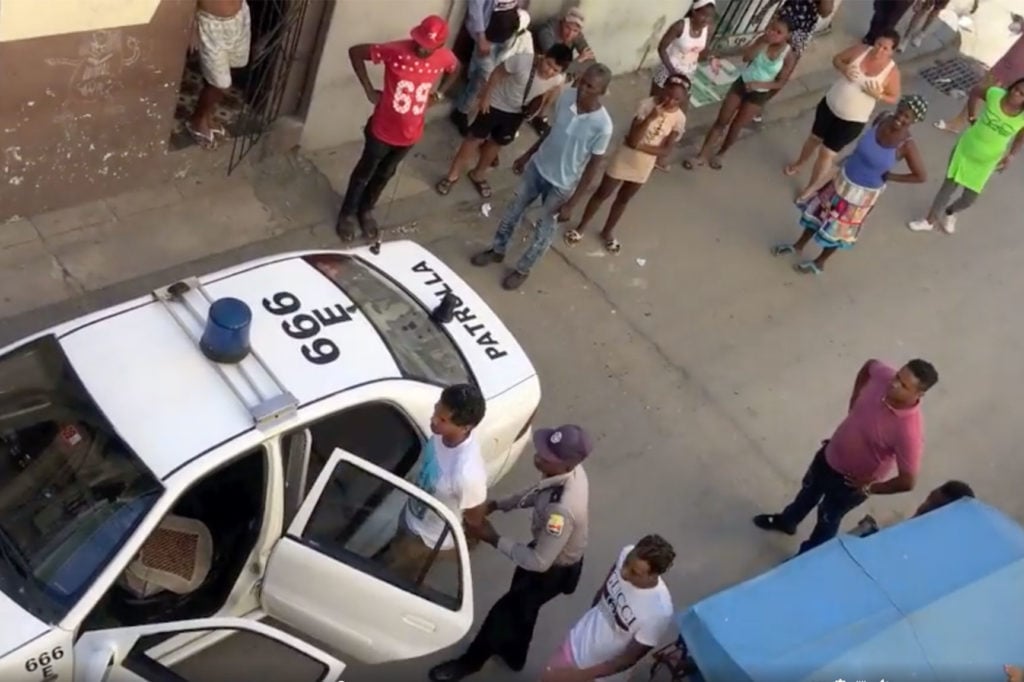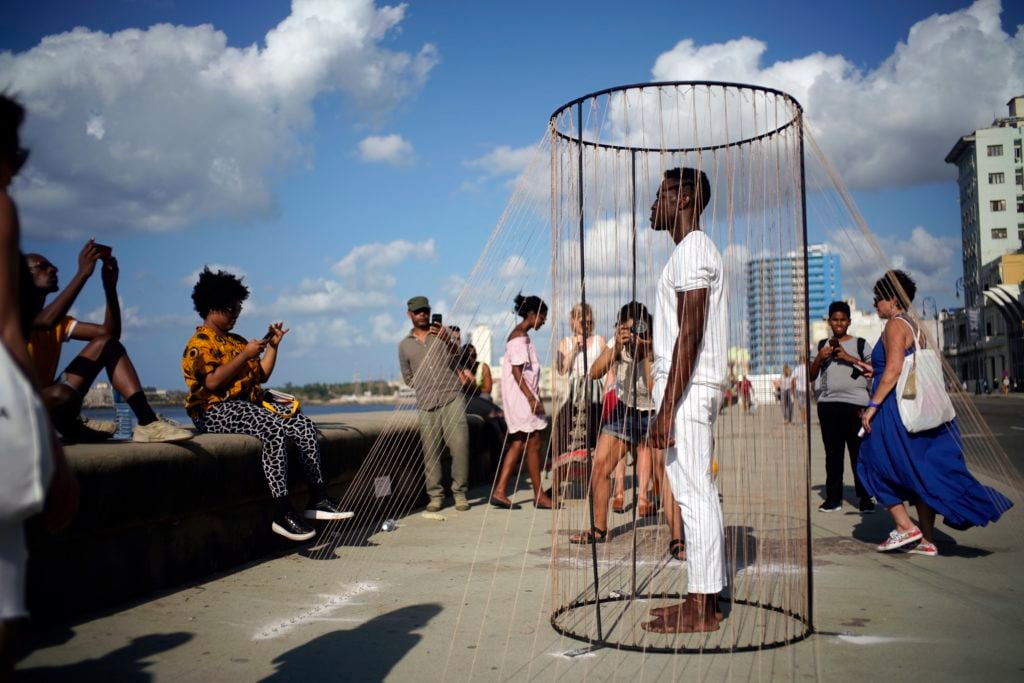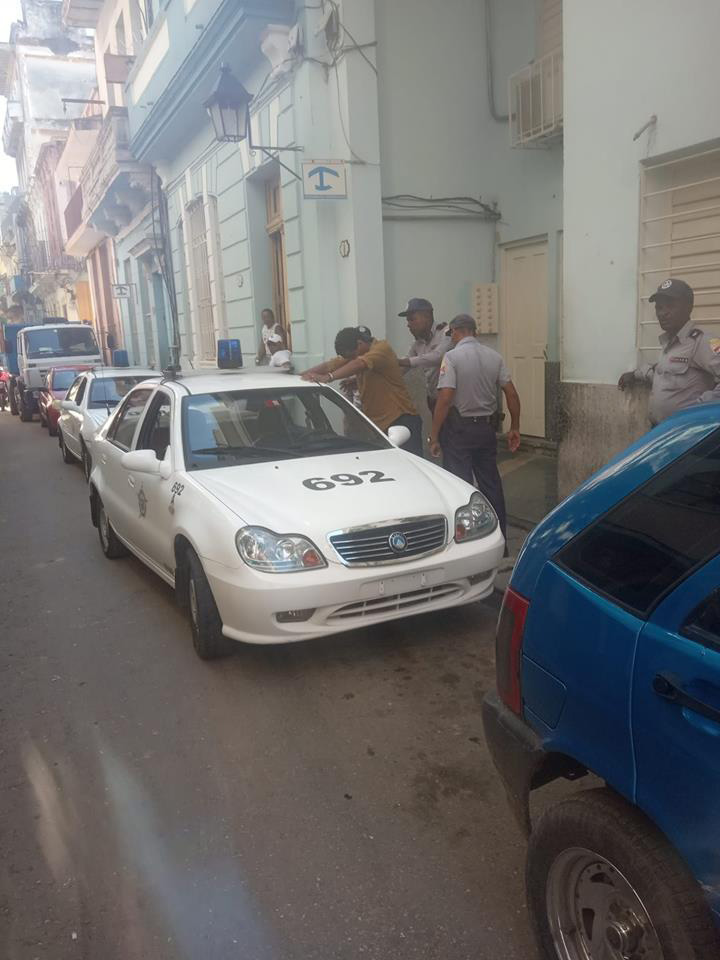Politics
‘The Government Gets to Decide Who Is an Artist’: Cuban Authorities Crack Down on Dissent as the Havana Biennial Opens
Multiple artists have been taken in by state officials, while others have been denied entry to the country.

Multiple artists have been taken in by state officials, while others have been denied entry to the country.

Taylor Dafoe

In the days surrounding the start of the 13th Havana Biennial, which opened last Friday in the Cuban capital, government officials have been clamping down on artists and preventing visitors from entering the country.
Today, Cuban artist Luis Manuel Otero Alcántara was picked up by authorities after being release by them just yesterday following a four-day detention. Alcántara was initially arrested last Thursday outside his home after staging a performance in which he and two others wore American flags as capes.
Another artist, Michel Matos, filmed the arrest and uploaded the footage to his personal Facebook page. The next day, he was taken from his home and questioned by authorities for more than 9 hours. In a separate event, poet and artist Amaury Pacheco was also apprehended by Cuban police before being released
Alcántara and Matos are members of the San Isidro Group, a cohort of Cuban artists who have staged protests against the government and its enforcement of Decree 349, a new law that went into effect in December stipulating that all artistic activities must be pre-approved by the Ministry of Culture. The decree was signed by the country’s President, Miguel Díaz-Canel, shortly after he was sworn into office in April 2018.

Cuban-American artist Carlos Martiel stands inside his art project The Blood of Cain at the Malecon waterfront during the 13th Havana Biennial art fair, on April 14, 2019, in Havana, Cuba. Photo: Sven Creutzmann/Mambo photo/Getty Images.
“The decree legalizes and formalizes methods that were already being used by the Cuban government against independent artists and journalists,” says Cuban-American artist Coco Fusco in an email to artnet News. “The government gets to decide who is or isn’t an artist and its inspectors can decide on the spot whether an event/show/studio should be shut down.”
Days before the Havana Biennial opening, Fusco herself was denied entry into the country. She arrived at Havana’s José Martí International Airport on Wednesday, April 10, only to be turned away by officials, who provided no reason for their actions. Fusco says is being targeted for her critical writings on art and cultural politics, her research, and her efforts to raise funds for the art projects in the country.
“State Security regularly threatens artists and cultural producers to try to extract information and intimidate them into obedience,” says the artist. “If you don’t cooperate, you are considered suspect.”

Luis Manuel Otero Alcántara being arrested for a second time within a week. Photo: Claudia Genlui Hidalgo.
Yesterday, fellow Cuban performance artist Tania Bruguera, who has been particularly vocal in her opposition to state crackdowns and the enforcement of Decree 349, punished an essay on Hyperallergic attacking the state and explaining why she refused to visit the exhibition this year.
“Whether the Ministry of Culture provides material and promotional support for an artist’s project is determined not by the quality of that artist’s work but on his/her/their loyalty to the government and on the use that can be made of that artist to improve the international image from the country,” Bruguera wrote. “The objective of this biennial is not to promote Cuban artists (that will be up to each according to their possibilities) but to make everyone understand that decree-law 349 will be applied only to those who are independent and ask discomforting questions.”
Fusco largely agrees.
“The Biennial is not really about the local community, whatever that means,” she says. “It is a major cultural tourism event that brings in millions of dollars. The main goal is to show the world that Cuba is a cultural superpower and to dispel any concern about repression via the exhibition of lots of art. Most foreigners go away happy if they are wined and dined and charmed by biennial staff. They don’t ask questions and presume that if there is art to see, then the revolution is a great thing.”